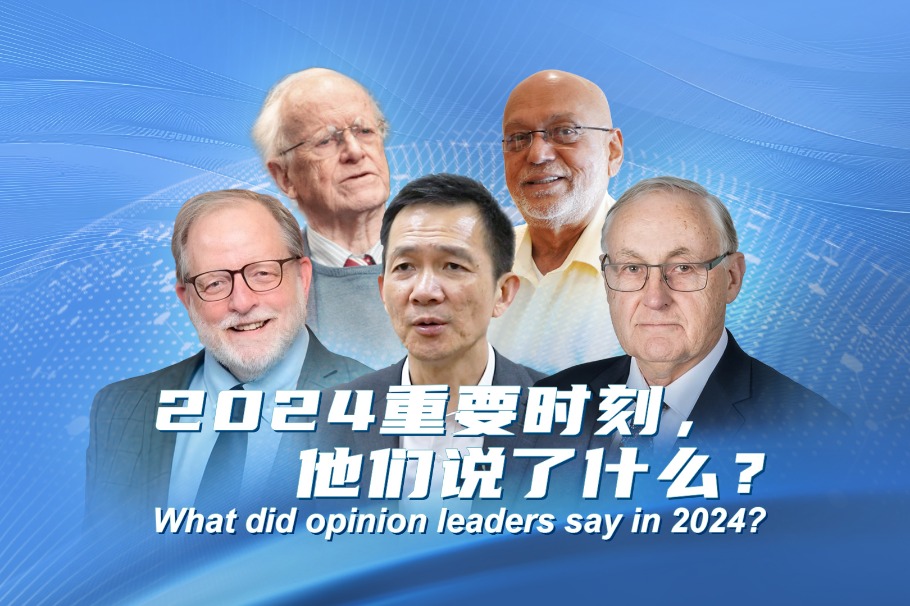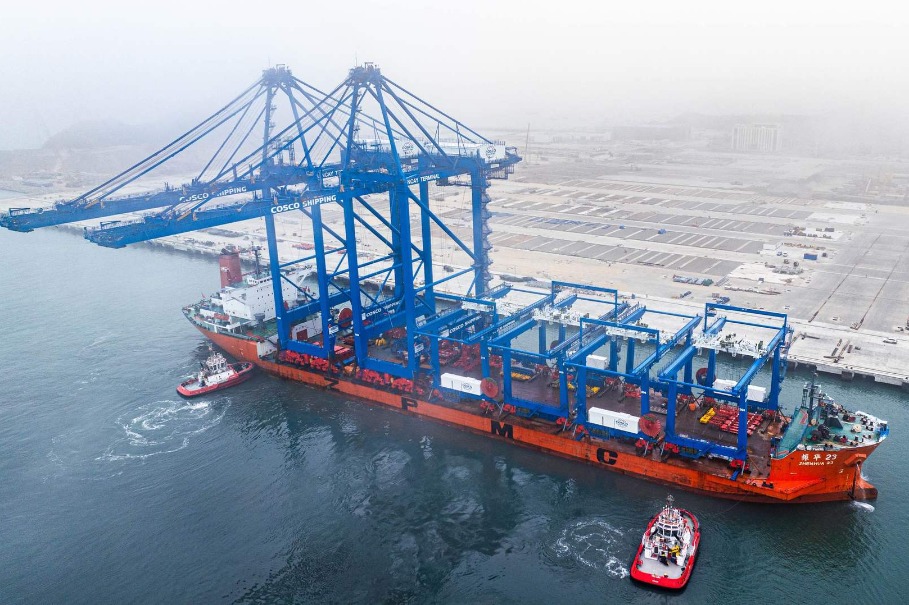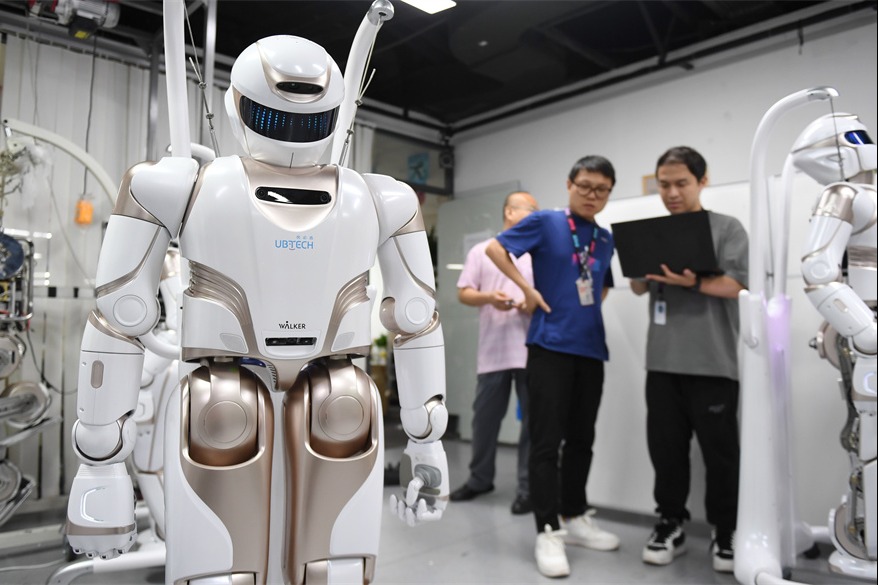Smart power shift


and networking technologies are central to the future of global energy systems
Facing the urgent need to address climate change and reduce carbon emissions, the global energy sector is undergoing a profound transformation. This transition is driven by the shift toward clean and renewable energy sources, supported by digitalization and networking technologies. These technologies are central to improving energy efficiency, enhancing grid stability, and facilitating the integration of renewable energy sources. However, different regions have responded to these trends in varying ways, on the basis of their respective economic, political and technological contexts.
In Europe, the development of digitalization and networking technologies in energy systems has been a focus for several years. The European Union, in particular, has made significant investments in smart grid technologies and digital infrastructure as part of its broader energy strategy. The EU's focus on reducing carbon emissions and increasing renewable energy integration has led to the creation of a more interconnected energy market, where energy can be traded across borders. The integration of renewable energy sources, such as wind and solar, into the grid is a core challenge for the EU, and the use of digital technologies such as smart grids is key to addressing this issue.
However, the diverse regulatory frameworks and technological levels among EU member states make it difficult to fully integrate energy systems across borders. This challenge, combined with concerns about cybersecurity, where energy networks are particularly vulnerable to cyberattacks, presents a significant hurdle to the region's progress.
In China, the government has also prioritized digitalization as part of its energy transformation strategy. The development of smart grids, energy management systems and advanced metering infrastructure is key to improving energy efficiency, integrating renewable energy sources and optimizing grid management. China has invested heavily in digital technologies such as artificial intelligence, big data and the internet of things to create more flexible and resilient energy systems. Through the Belt and Road Initiative, China has extended its expertise and technology to neighboring countries, helping to modernize their energy infrastructure. In particular, China has been instrumental in developing digital energy solutions in Southeast Asia, Central Asia and parts of Africa, providing financing and expertise to improve energy access and integrate renewable sources.
However, China faces the challenge of integrating its traditional energy systems with the new digital infrastructure, as much of its existing energy infrastructure was designed before the rise of digital technologies. Additionally, cybersecurity remains a critical issue as China increases its reliance on interconnected digital energy systems.
In Southeast Asia, countries have rapidly adopted digital energy solutions to meet the growing demand for electricity and address sustainability goals. Nations such as Thailand, Vietnam and Indonesia are deploying smart grids and energy storage systems to improve energy access, reduce dependency on fossil fuels and optimize grid operations. However, these countries face significant challenges in terms of infrastructure limitations, regulatory hurdles and insufficient investment in advanced technologies. Many Southeast Asian nations still rely on traditional energy systems that are not compatible to the integration of renewable energy or advanced digital solutions. As a result, the transition to a more decentralized and digitalized energy system requires significant investments in both infrastructure and human capacity. Furthermore, the regulatory frameworks need to support the adoption of digital energy solutions are often underdeveloped or fragmented.
In Africa, the adoption of digital technologies in energy systems is still in its early stages but presents considerable opportunities. Many countries, particularly those in sub-Saharan Africa, face significant challenges in providing reliable and affordable electricity. Digital solutions such as solar microgrids, smart meters and off-grid solar power systems are helpful to address these challenges by improving energy access in remote areas and facilitating the integration of renewable energy. For instance, in Kenya and Nigeria, solar-powered microgrids and smart meters are being deployed to improve the efficiency of energy distribution and provide electricity to areas that are not connected to the traditional grid.
However, Africa faces several obstacles, including inadequate infrastructure, limited financing, and a lack of regulatory frameworks. Despite these challenges, Africa's vast renewable energy potential, particularly in solar power, presents an opportunity for rapid growth in the adoption of digital energy technologies.
The adoption of digitalization and networking technologies in energy systems faces several common challenges across regions. The integration of traditional energy systems with new digital technologies is a key challenge. Many existing energy infrastructures were designed without considering the need for digital technologies and renewable energy integration. Retrofitting these systems to accommodate smart grids, digital meters and automation systems is expensive and technically challenging. Additionally, as energy systems become more digital and interconnected, they become more vulnerable to cybersecurity risks. The growing reliance on communication networks and digital platforms for real-time data and energy management increases the attack surface for cybercriminals, making the protection of critical energy infrastructure a key priority.
Furthermore, regulatory barriers remain an obstacle to the widespread adoption of digital energy systems. Different regions and countries have varying standards and policies for energy digitalization, which complicates cross-border cooperation and slows down the creation of a unified, integrated global energy market.
In response to these challenges, several steps can be taken to enhance the development of digital and networked energy systems. First, international cooperation should be strengthened to share best practices, technologies and regulatory frameworks. Collaborative projects between countries can help bridge the technological divide and foster innovation in energy digitalization.
Second, cybersecurity must be prioritized across all regions, as the risks associated with interconnected energy systems continue to grow. Robust cybersecurity frameworks, regular assessments, and the development of resilient digital platforms are essential to protect critical infrastructure.
Third, investment in infrastructure and capacity building will be necessary to support the deployment of digital energy systems, particularly in developing regions. Governments and international financial institutions must increase financing and technical support for these initiatives.
Finally, regulatory alignment is crucial for enabling seamless cooperation between countries and regions. Efforts should be made to harmonize energy policies and technical standards to facilitate the integration of digital energy solutions and the creation of a unified global energy market.
Digitalization and networking technologies are central to the future of global energy systems. While significant progress has been made, there are still substantial challenges to be overcome. By fostering international cooperation, focusing on cybersecurity, investing in infrastructure and aligning regulatory frameworks, countries can create a more resilient, efficient and sustainable energy system for the future.
Yu Hongyuan is a professor and director of the Institute for Public Policy and Innovation at the Shanghai Institutes for International Studies. Ren Kanghua is a research assistant at the Shanghai Institutes for International Studies. The authors contributed this article to China Watch, a think tank powered by China Daily. The views do not necessarily reflect those of China Daily.
Contact the editor at editor@chinawatch.cn.



































